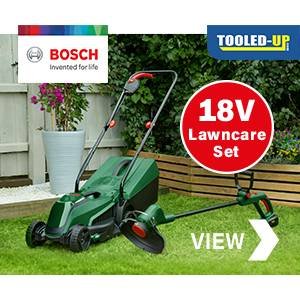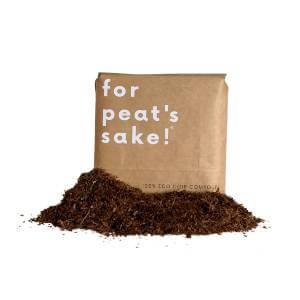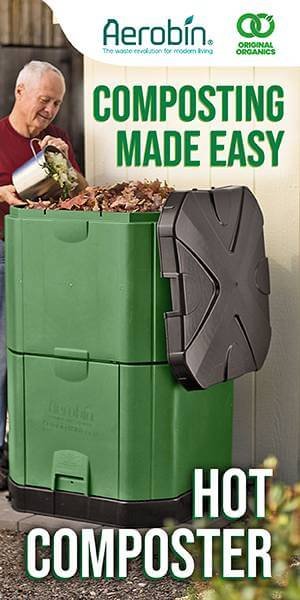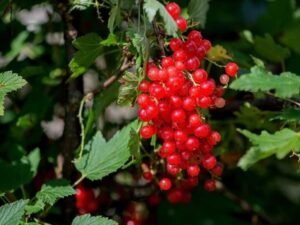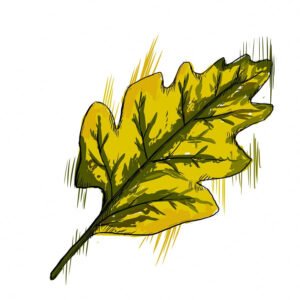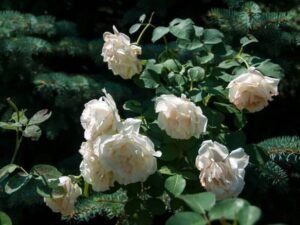Quick Facts and Information
- Common Name/s - Blossom End Rot
- Scientific Name/s - N/A
- Plants commonly affected - Tomatoes, Cucumbers, eggplant/aubergine and watermelons.
- Common Symptoms - A leathery dark-coloured patch occurs at the bottom blossom end of the fruit.
What does Blossom end rot look like?
A leathery dark-coloured patch occurs at the bottom blossom end of the fruit. It is a frequent problem where growing bags are used. There is also a possibility of an internal blossom rot which you will only notice once the fruit is picked.
What is the cause of blossom end rot?
Blossom end rot is the cause of a calcium deficiency that derives from fluctuations in the changing water supply of your plants. Dry soil, damaged roots or severe root pruning can likely cause blossom end rot.
Other causes of blossom end rot include over-irrigation/overwatering, highly acidic soil and high humidity. Blossom end rot is not a cause of a fungus or disease.
What plants are most susceptible to blossom end rot?
The most susceptible to blossom end rot is tomatoes, eggplant/aubergine, watermelons and cucumbers.
How do I Treat blossom end rot?
Unfortunately, once blossom end rot has affected your crops, nothing much can be done to treat it. Although with this in mind, prevention is the best cure in the future…
How do I Prevent blossom end rot?
Never let the soil or compost dry out, especially when the fruit is swelling. Blossom end rot is not caused by a disease but by a severe water shortage when the fruit is swelling; that lack of water triggers a calcium deficiency, an essential nutrient required for successful crop growing.
- Do a soil test to ensure that the soil's pH level is between 6 and 6.5. Add lime to the soil to correct the pH levels. Add lime to the soil a couple of months before planting crops into the soil.
- Apply the recommended fertiliser as and when required. Regular soil tests can help indicate as and when fertiliser is needed.
- Apply a good quality mulch to help preserve moisture in the soil.
- Water regularly.
- If you notice Blossom end rot, drench the soil around the roots using a mix of calcium chloride and calcium nitrate.
- Choose a crop variety that is less prone to blossom end rot.
- Remove the affected fruit as soon as you see signs of blossom end rot. Sadly once Blossom end rot sets in, the fruit cannot recover. It is essential to remove the affected fruit. Otherwise, it can attract bacteria and fungi.
Are blossom end rot tomatoes edible?
Yes, if the affected tomato fruit is ripe. If the fruit is not ripe, the blossom end rot will likely prevent further development, so we recommend destroying the remaining fruit.
Cut out the rotted part, and you can eat the rest.
Is blossom end rot contagious?
Blossom end rot only affects the disfigurement of the fruit. Therefore, blossom end rot is not contagious.
Is blossom end rot reversible?
To reverse blossom end rot, it is advised to remove any affected fruit by placing them in the bin or compost heap if you have one due to blossom end rot caused by a calcium deficiency.
Increasing calcium levels can be done by adding powdered milk into your watering can and watering the affected plants generously with this solution. Once this is done, keep an eye on your plants and water daily during hot weather.
Is blossom end rot a fungus?
No, blossom end rot is not a fungus; it is a physiological disorder caused by a lack of calcium. The fungus can develop if the affected fruit is not removed.
Is blossom end rot a disease?
No, blossom end rot is not a disease; it is a physiological disorder caused by a lack of calcium.
What is blossom end rot in squash?
Blossom end rot on squashes begins at the end of the fruit, just like tomatoes.
The rot looks like a Leathery dark-coloured patch that gradually softens, allowing the fungus to grow and spread on the fruit.
What is blossom end rot caused by?
Blossom end rot is the cause of a calcium deficiency that derives from fluctuations in the changing water supply of your plants. Dry soil, damaged roots or severe root pruning can likely cause blossom end rot.
Other causes of blossom end rot include over-irrigation/overwatering, highly acidic soil and high humidity. Blossom end rot is not a cause of a fungus or disease.
Does blossom end rot affect the whole plant?
Blossom end rot only affects the fruit of the plant. The most susceptible blossom end rot is tomatoes, eggplant/aubergine, watermelons and cucumbers.
What causes blossom end rot on peppers?
Blossom end rot on peppers is precisely the same issue as other fruits. A leathery dark-coloured patch occurs at the bottom blossom end of the fruit.
This is caused by a calcium deficiency which is often derived from fluctuations in watering.
When to apply blossom end rot spray?
Some advice is to spray tomatoes with calcium nitrate to keep on top of blossom end rot. Spray near the plant’s roots to ensure the nutrients enter for the most effective method.
When to fertilise blossom end rot?
The quick answer is sooner rather than later! Once blossom end rot is visible on the fruit/s, it is advised to remove any affected fruit by placing them in the bin or compost heap if you have one due to blossom end rot caused by a calcium deficiency.
Increasing calcium levels can be done by adding powdered milk into your watering can and watering the affected plants generously with this solution. Once this is done, keep an eye on your plants and water daily during hot weather.
Where is blossom end rot?
Blossom end rot is typically found on the fruit of tomatoes, eggplant/aubergine, watermelons and cucumbers.
Why does Blossom end rot happen?
Blossom end rot is the cause of a calcium deficiency that derives from fluctuations in the changing water supply of your plants.
Dry soil, damaged roots and severe root pruning can likely cause blossom end rot. Other causes of blossom end rot include over-irrigation/overwatering, highly acidic soil and high humidity. Blossom end rot is not a cause of a fungus or disease.










